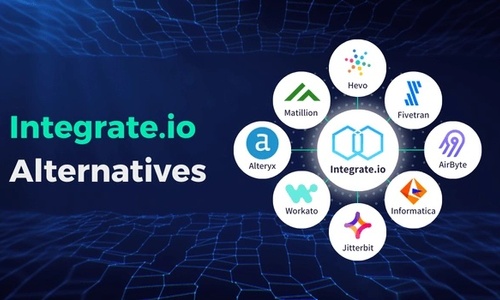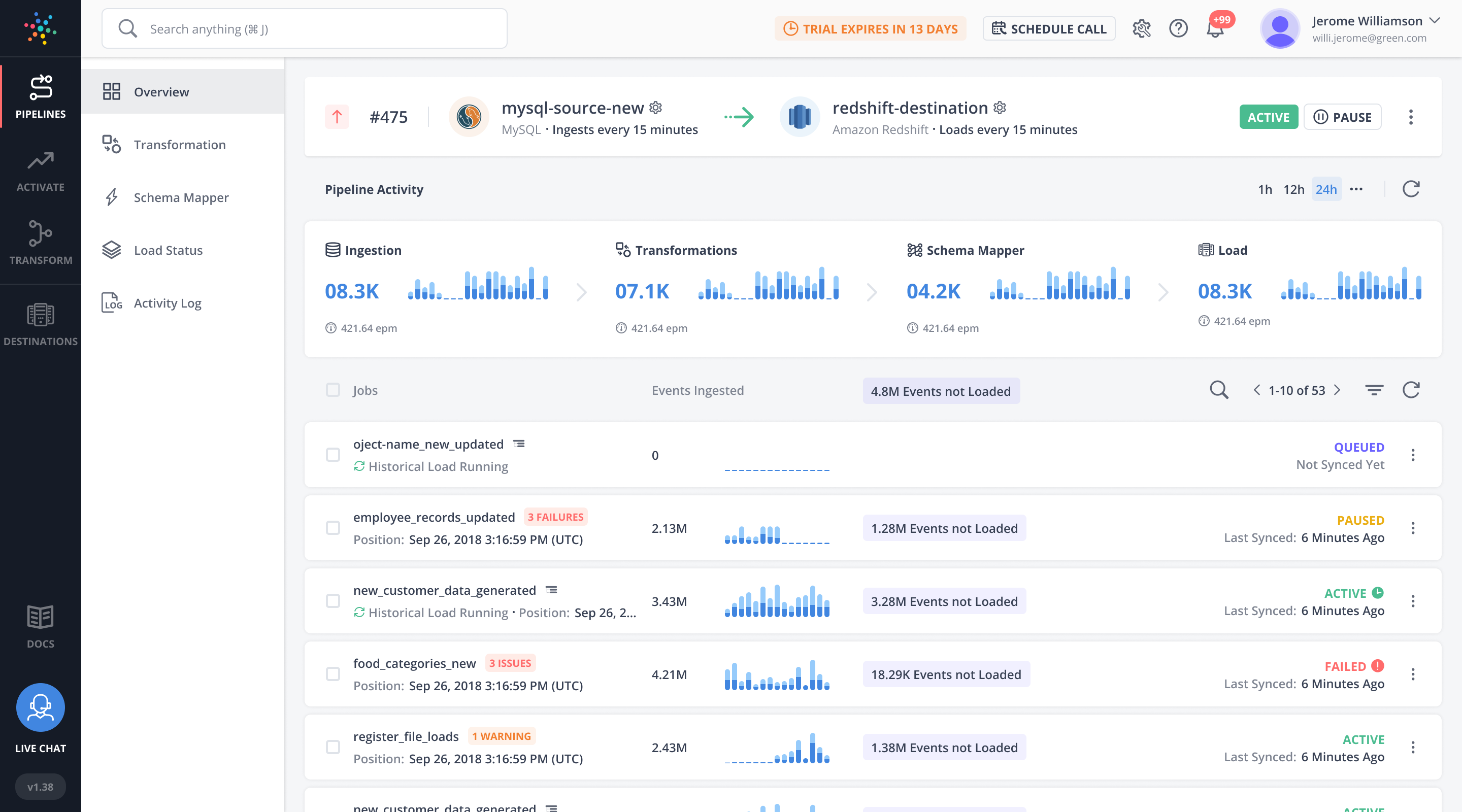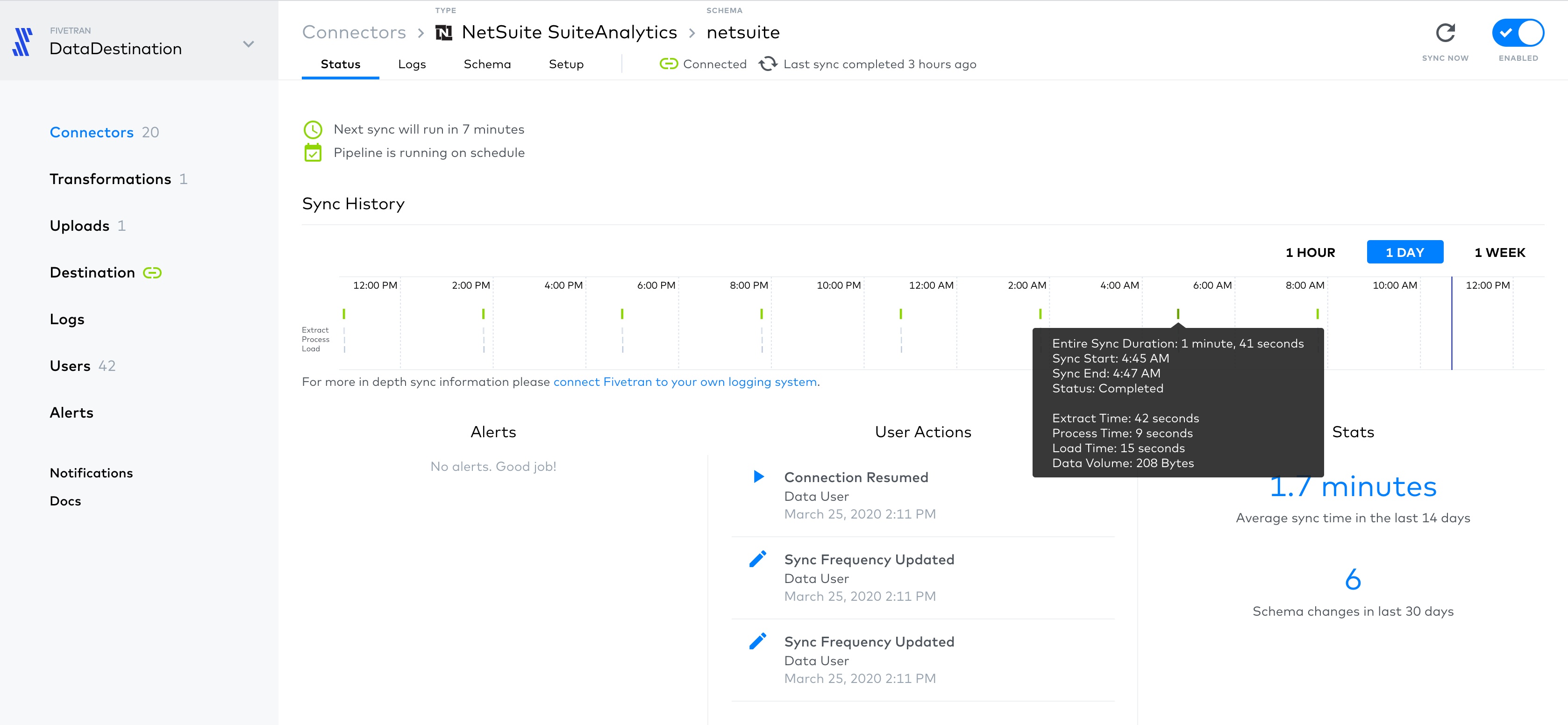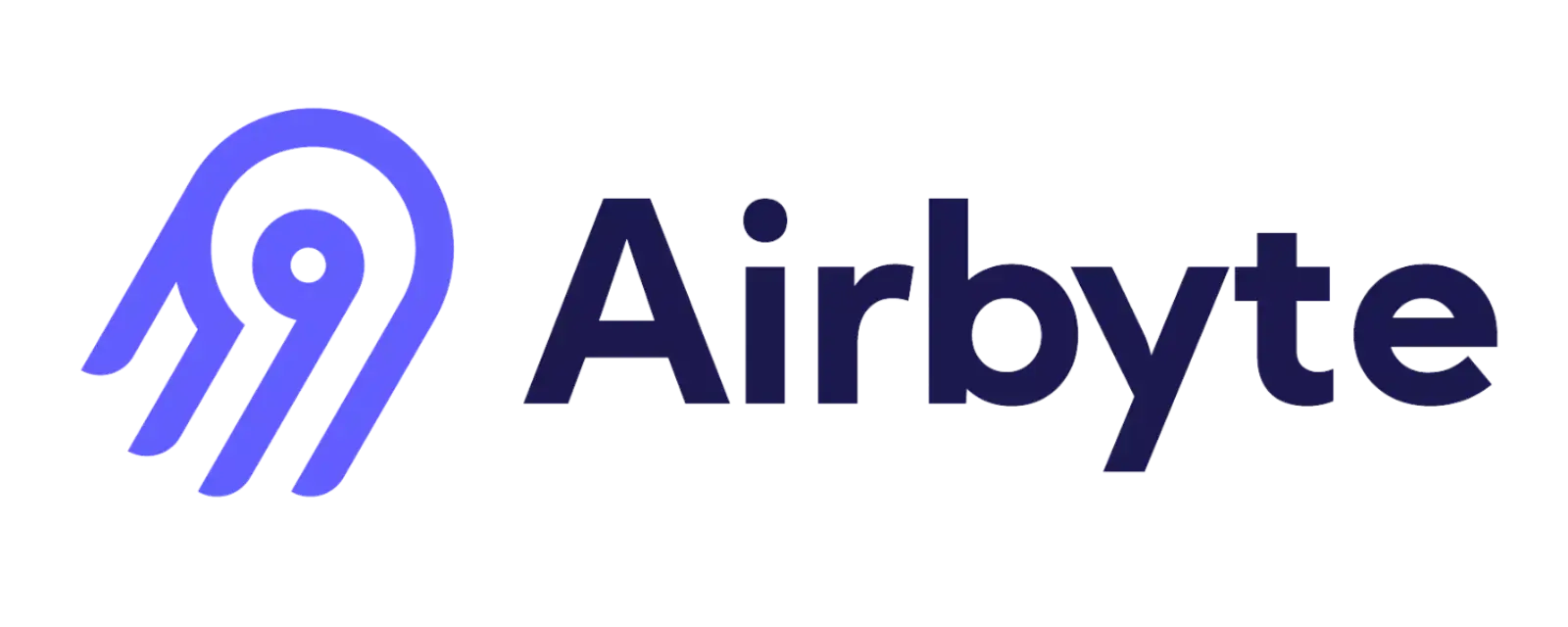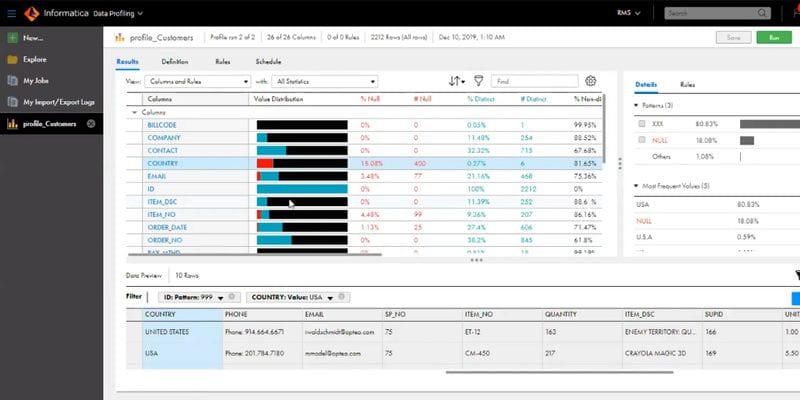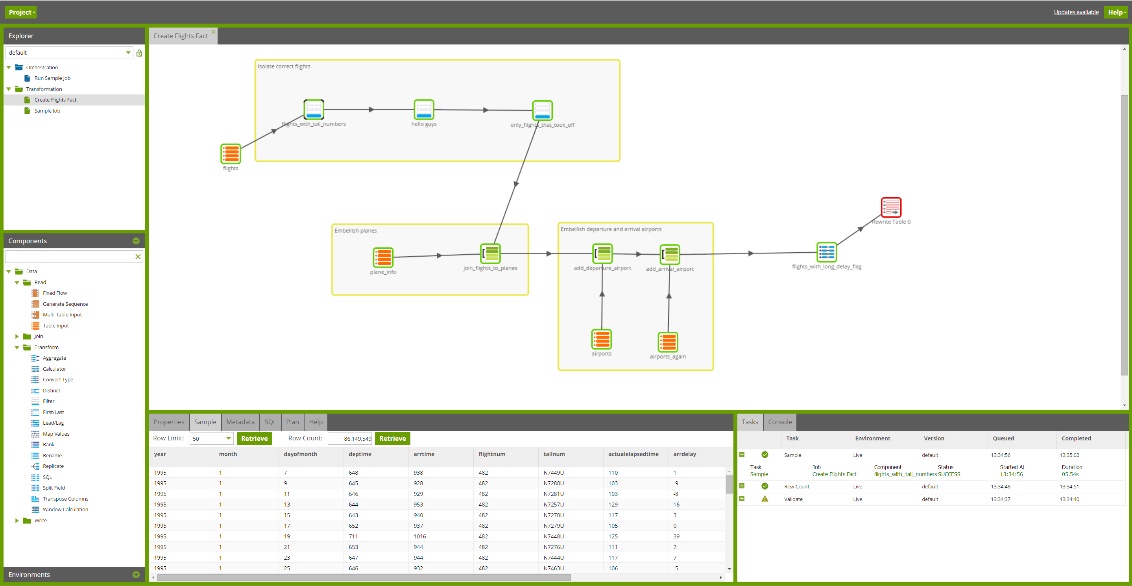Organizations rely on data to drive their decision-making. But with so many different sources generating vast amounts of data, it’s virtually impossible to manually compile and cleanse it all.
This is why ETL (extract, transform, load) tools have become critical for data-driven organizations, as they facilitate the data integration process by consolidating data from various sources into a single, unified format.
Integrate.io (Formerly Xplenty) is a simple, no-code/low-code platform that streamlines ETL pipeline development. Here, we dive into Integrate.io's capabilities and compare its features to those of other popular platforms.
Here are the 5 key takeaways:
- Integrate.io is a robust ETL tool that offers advanced features and customization options while still being easy to use.
- Several alternatives to Integrate.io exist today, all with different features and pricing structures.
- Hevo Data is an alternative that offers end-to-end pipelines with minimal maintenance. Fivetran provides a wide range of out-of-the-box connectors. Airbyte is an open-source platform with custom SQL transformations.
- Informatica excels at high-volume extract-load operations. Jitterbit, Workato, Alteryx, and Matillion are other platforms that offer data integration solutions with unique features.
- When choosing a data integration platform, it's important to understand your needs. While some alternatives may require skilled data engineers, opting for a no-code/low-code platform like Integrate.io streamlines data pipeline development.
What Is Integrate.io?
Rating: 4.3/5 (G2)
Integrate.io is a cloud-based data integration platform designed to simplify the ETL process. Its drag-and-drop interface enables users to build and deploy data pipelines that extract data from various sources, transform it, and load it into data warehouses.
The platform is widely used by organizations of all sizes, ranging from startups to enterprises, and across various industries such as finance, healthcare, retail, and technology.
Key Features of Integrate.io
Here are some of the most important features of Integrate.io:
- ETL/reverse ETL: Integrate.io simplifies data extraction, transformation, and loading, as well as reverse ETL processes, enabling seamless data integration and movement between various sources and destinations.
- ELT and CDC: The platform has ELT and Change Data Capture (CDC) capabilities, ensuring your data is always up-to-date.
- Data observability: Integrate.io provides data observability features that help monitor and maintain data quality, track data lineage, and ensure compliance with data governance policies.
- Built-in connectors: With hundreds of pre-built connectors, Integrate.io enables seamless integration with a wide range of popular and rare applications, databases, and services, reducing the need for custom coding.
- API: Integrate.io features advanced API management capabilities, allowing for easy integration with custom-built applications or third-party services that might not have pre-built connectors.
- No-code/low-code: The platform's user-friendly, no-code/low-code interface enables users with limited technical knowledge to create and manage data integrations effortlessly, streamlining data workflows for organizations of all sizes.
Integrate.io Alternatives: How Do They Compare?
In the ever-evolving landscape of data integration, numerous ETL tools are competing to be the go-to solution for businesses. Here’s how these popular Integrate.io alternatives compare in terms of key features, ease of use, and pricing.
Hevo Data vs. Integrate.io
Hevo Data Rating: 4.3/5 (G2)
Hevo Data Key Features
- Automated end-to-end pipelines: Hevo Data offers quick-to-set-up automated data pipelines with minimal maintenance required.
- Automated schema management: Hevo Data synchronizes source and destination data with automated schema management, catering to changes in source data.
Hevo Data is a data integration platform that provides end-to-end pipelines for pulling data from multiple sources, transforming it, and delivering it to target warehouses. With automated schema management and data transformation options, Hevo focuses on reducing the time required for setting up data analysis and reporting.
While both platforms provide robust no-code/low-code data integration solutions, Integrate.io offers rare built-in connectors and advanced API management capabilities.
Hevo Data charges based on the number of new records inserted or updated in the warehouse, with pricing starting at $239 monthly for 5 million rows.
Fivetran vs. Integrate.io
Fivetran Rating: 4.2/5 (G2)
Fivetran Key Features
- 100+ connectors: Fivetran offers a wide range of out-of-the-box connectors for data integration.
- Easy-to-use interface: Fivetran features a drag-and-drop interface for setting up and managing data pipelines.
- Warehouse-focused: Fivetran supports loading data into warehouses but has limited support for data lakes.
Fivetran is a no-code/low-code data integration platform with over 100 out-of-the-box connectors. The main difference between Fivetran and Intergate.io is that the first only supports ELT processes (Extract, Load, Transform), while the latter supports ETL, reverse ETL, CDC, and ELT processes.
Fivetran may also become more expensive over time, due to its consumption-based pricing structure.
Airbyte vs. Integrate.io
Airbyte Rating: 4.3/5 (G2)
Airbyte Key Features
- Connector Development Kit (CDK): Airbyte's CDK enables users to build custom connectors in any programming language.
- Open-source connectors: Airbyte provides a wide range of built-in, open-source connectors contributed by its user community.
- Data privacy: Airbyte's open-source and self-hosted version minimizes data privacy risks by allowing users to keep their data within their own infrastructure.
Airbyte is an open-source data integration platform offering cloud-native ELT solutions with over 200 data connectors. It features custom SQL data transformations, a connector development kit, and modular architecture.
While popular among developers, it can be inconvenient for beginners and requires significant technical resources. In contrast, Integrate.io offers simple pipeline development for those without coding experience.
Airbyte's pricing model is custom and based on usage. The Cloud plan costs $2.50 per credit with a 14-day free trial.
Informatica vs. Integrate.io
Informatica Rating: 4.4/5 (G2)
Informatica Key Features
- iPaaS solution: Informatica Cloud Data Integration (ICDI) is an integration Platform-as-a-Service, optimized for app integrations and capable of managing basic data integrations with user-friendly features.
- High-volume extract-load operations: Informatica excels at handling high-volume extract-load operations, making it suitable for organizations dealing with large amounts of data from multiple sources.
Informatica is a well-established data integration platform that excels at high-volume extract-load operations. It also offers a wide range of pre-built connectors.
Informatica is built with the enterprise in mind and requires skilled data engineers to use it effectively. Integrate.io, on the other hand, is a no-code/low-code data integration platform that provides simple data pipeline development. Anyone can use Integrate.io, regardless of their coding abilities.
Another difference between Informatica and Integrate.io is pricing. Integrate.io offers clear and transparent pricing plans, while Informatica charges based on consumption. Users must track their Informatica usage to determine costs.
Jitterbit vs. Integrate.io
Jitterbit Rating: 4.8/5 (G2)
Jitterbit Key Features
- API design and management: Jitterbit allows users to design and manage APIs, enabling the exposure of ODBC or JDBC databases as APIs.
- Application Integration (iPaaS): Jitterbit's iPaaS solution helps users connect various applications, micro-services, web services, and micro-apps, streamlining the process of application integration.
Jitterbit is an integration platform offering both on-premises and cloud-based solutions for data integration.
While Jitterbit provides ETL tools to help users extract, transform, and load data from various sources to the most popular databases and data warehouses, it does not support CDC (Change Data Capture) processes.
In comparison, Integrate.io features the fastest data replication available, which can unify all your data every 60 seconds.
Jitterbit currently does not disclose its pricing, so you'll need to reach out to the sales team.
Workato vs. Integrate.io
Workato Rating: 4.7/5 (G2)
Workato Key Features
- Smart data pipelines (ETL/ELT): Workato enables users to effortlessly load data from various sources, such as cloud apps, on-prem databases, files, ERPs, APIs, and data streams.
- Next-Gen iPaaS: Workato's low-code/no-code platform allows users to build integrations faster than traditional platforms.
- Flexible and customizable: Workato provides customizable pipelines, enabling users to apply push-down or built-in transformations depending on their needs.
Workato is a workflow automation platform that helps businesses streamline data integration processes between various applications. With pre-built connectors, a vast library of ready-to-use recipes, and a cloud-native architecture, the platform reduces operational costs and makes it easier for various teams to create and manage integrations.
While cloud-based Integrate.io also offers pre-built connectors, the platform includes additional features such as simple, real-time monitoring and error handling, making it easier for users to maintain their pipelines. Integrate.io also offers CDC and API management capabilities.
Workato’s pricing is based on the number of recipes you'll need to configure. You must contact their sales department to get a custom quote.
Alteryx vs. Integrate.io
Alteryx Rating: 4.5/5 (G2)
Alteryx Key Features
- Data integration automation: Alteryx features an advanced ETL tool with native connectors to read and pull data from various sources, streamlining the data integration process.
- Data enrichment: Alteryx enables users to enhance their metrics with additional insights, such as maps, addresses, drive times, and geographical information.
Alteryx is a versatile analytics and data science platform with ETL capabilities. It's designed primarily for experienced data analysts who want to create and share business metrics, graphs, and visualizations.
Integrate.io, on the other hand, focuses on providing a user-friendly, enterprise-grade ETL solution that's accessible to users with varying levels of technical experience.
Regarding pricing, Alteryx charges per user or team, depending on your needs. For example, Alteryx Designer starts at $5,195 per individual user/year.
In contrast, Integrate.io’s ETL Starter plan features a fixed cost of $15,000 per year and comes with unlimited users, packages, and transfers.
Matillion vs. Integrate.io
Matillion Rating: 4.4/5 (G2)
Matillion Key Features
- ELT capabilities: Matillion is an ELT (Extract, Load, Transform) platform, which means it performs transformations after loading data into the data warehouse, leveraging the processing power of the destination data warehouse.
- Workflow automation and real-time monitoring: Matillion provides automation tools for creating event, time, and logic-based task scheduling and workflows, along with real-time monitoring and alert capabilities.
Matillion and Integrate.io are both cloud-native data integration platforms focusing on providing user-friendly, efficient data integration solutions. However, they have some key differences in their approaches to data integration.
For example, Matillion focuses solely on ELT capabilities, while Integrate.io offers ETL, reverse ETL, and ELT capabilities.
Another big difference is represented by the pricing strategy of each tool. Matillion offers a pay-as-you-go pricing model based on credits, with pricing starting at $2.00 per credit for the Basic plan.
Integrate.io features a flat rate for its ETL and reverse ETL capabilities. Or, you can select a custom plan that's built to fit your specific needs.
Want to Build a No-Code Data Pipeline? Choose Integrate.io.
Are you looking to build a no-code data pipeline for your organization? Look no further than Integrate.io, the perfect solution for teams that desire a simple, efficient, and powerful no-code data pipeline platform.
With its user-friendly interface and hundreds of rare and popular pre-built connectors, Integrate.io (formerly Xplenty) simplifies the complex process of data integration, empowering users of all technical backgrounds to easily create comprehensive data pipelines.
Try Integrate.io for yourself to see how it can help you streamline and optimize your data integration processes.
